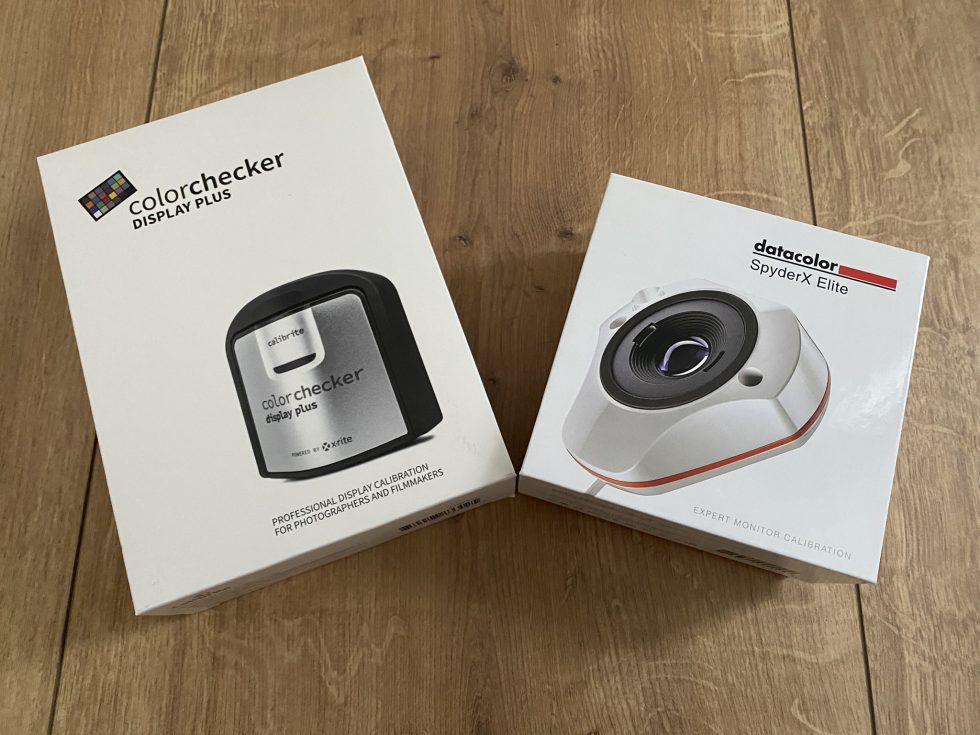Today for the weekend we have some light food. A few weeks ago, I switched my testing software – for my monitor tests – from DisplayCal to Portrait Displays Calman Ultimate. I had written a dedicated article on this and afterwards there was quite a tense disagreement in the forum (to put it mildly). The topic was not the Calman Ultimate software per se, but that my colorimeter used was unsuitable for this expensive software.
Basics for our monitor and display tests – Portrait Displays Calman Ultimate
Okay, I see this as a sporting challenge and I always take criticism seriously. The reader criticized my SpyderX and said that the least I needed was a colorimeter from X-Rite – today also known as Calibrite. Since I do not own a colorimeter from Calibrite and also did not want to spend my private money for yet another colorimeter, I contacted Calibrite. They were kind enough to provide me with a ColorChecker Display Plus (on loan).
Today’s goal is to take a look at what the two colorimeters can do. Gray Scale incl. contrast, ColorChecker and Saturation in relation to measurement performance. Of course, also in terms of calibration with Calman Ultimate. The question is: Are there significant differences? Before I begin, however, I would like to say a few words to you.
The goal I pursue with the Monitor articles is quite simply explained. You want to know what you get for your money. With the tools at my disposal, I basically check the essential specifications of the manufacturer. In addition to response times and latencies, I also look at color accuracy. After all, there are some of you readers who attach great importance to such things. In the end, it doesn’t matter whether I measure to the third decimal place, but primarily whether the manufacturer’s specifications roughly fit and the desired performance will also arrive at your home – or not. My measuring equipment is easily sufficient to determine this.
Of course, I could combine the 3,000 Euro software with a 5,000 Euro measurement tool. But for what? The SpyderX Elite is priced at around 160 euros (MSRP at 279 euros) and the ColorChecker Display Plus at 250 euros MSRP. Both can measure up to 2,000 nits and have their weakness in terms of black levels. The ColorChecker Display Plus has a black level of 0.1 nit and that means: 2,000 nits / 0.1 = 20,000 : 1 contrast ratio. That would also be the technical maximum. The SpyderX is in a comparable range here, but Datacolor has not yet told me the exact black level. With the KTC OLED panel, however, you could also see that the contrast (with the SpyderX) was output at several million to one. So the software still plays a certain role as well. So much in advance.
Test system
| CPU | Intel Core i9-12900K |
| Mainboard | MSI MPG Z690 Carbon WiFi |
| RAM | 2x 16 GB Corsair Dominator 6000 MHz CL 30-36-36-76 |
| SSD 1 | Samsung 980 Pro 500 GB (System) |
| SSD 2 | MSI M480 2 TB (games) |
| SSD 3 | HP EX950 2 TB (Games) |
| SSD 4 | HP SDD S650 2 TB S-ATA (Backup) |
| CPU Cooler | Alphacool Eisbaer Aurora 360 |
| Power supply unit | Seasonic Prime Platinum 1300 Watt |
| GPUs | NVIDIA GeForce RTX 4090 FE |
| Sound | SoundblasterX AE-5 Plus |
| Keyboard | Sharkoon Purewriter RGB (Red Button) via USB @1000 Hz polling rate |
| Mouse | Sharkoon Light² 200 @1000 Hz Polling Rate |
| Monitor |
BenQ EX3415R 3440 x 1440p @144 Hz |
| Test Tools / Software |
SpyderX Elite vs. ColorChecker Display Plus / Portrait Displays Calman Ultimate |
I’m using a monitor from BenQ, the EX3415C (dedicated article to follow) with a 21:9 Ultrawide IPS panel, as a test object. Why the monitor now? It has the most accurate factory-calibrated sRGB mode I’ve seen. And we try to calibrate the test monitor in user mode regarding DCI-P3 color space. This is the best way to make today’s comparison. So here goes…



































78 Antworten
Kommentar
Lade neue Kommentare
Veteran
Moderator
Veteran
Mitglied
Urgestein
Moderator
Veteran
Moderator
Neuling
Veteran
Moderator
Moderator
Veteran
Moderator
1
Urgestein
Veteran
Urgestein
Veteran
Alle Kommentare lesen unter igor´sLAB Community →